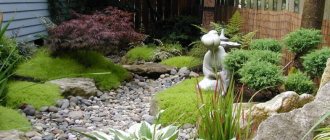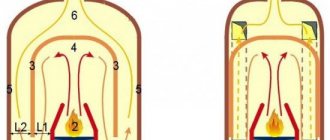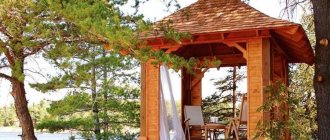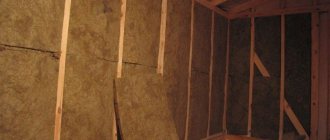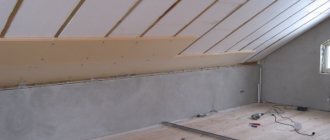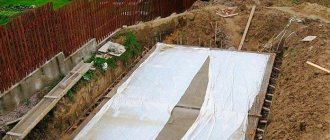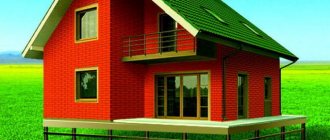Keeping any living space warm is a top priority for the homeowner. “Leakage” of warm air will increase the cost of coolants in the cold season and electricity, which will be spent on cooling the air in the hot summer . Such unforeseen expenses can be reduced by insulating the facade of the house. To perform insulation work, you can choose any convenient method and material. Each has its own advantages and disadvantages, but the material performs one functional task - to retain heat.
The difference between external insulation and internal insulation
If the insulation of a brick house is not carried out according to the rules, heat loss can reach up to 30% only through the walls. This factor can be influenced not only by the thickness of the partitions and the presence of cracks in it.
Insulation is also important. However, many people wonder: what is the best way to carry out insulation - outside or inside?
External insulation is the most acceptable option compared to internal insulation:
- The space from the inside will not be reduced due to the additional layer;
- There will be no additional load on the foundation and walls;
- Insulation can not only protect a building from winds and cold, but also serve as decoration for the facade;
- The walls will not freeze and accumulate moisture, whereas this may well happen with internal insulation. This happens because the dew point shifts. As a result, the service life of the building is reduced, and it is not always comfortable, causing trouble to the owners;
- The insulation also serves as a noise absorber from the outside.
Of course, there are a number of exceptions when it becomes impossible to install thermal insulation from the outside:
- The house is an architectural monument, therefore it is prohibited to disturb its façade;
- It is technically impossible to carry out façade work.
In this case, you can insulate the room from the inside, the main thing is to use materials that will be vapor permeable. Otherwise, the dew point will shift inward, causing the humidity to increase. And even subsequent insulation from the outside cannot solve this problem.
Calculation of insulator thickness
To determine the thickness of insulation for a home, you can use special Internet resources where you can find online calculators for calculations. Please note: the resulting number can only be an estimate. Things to consider:
- Thickness of external walls.
- The level of their heat resistance.
- Specific climate in a given area.
- Temperatures for each season.
- Features of thermal conductivity of insulation.
Knowing this information, you can calculate the required thickness of the insulation material. You can make the calculations yourself or seek advice from a specialist who will insulate your facade.
Material requirements
The best materials for insulation should have a number of properties:
- Shrinkage should be minimal, and there should be no deformation of the insulation due to sunlight or temperature changes. It must be resistant to various influences;
- Long service life;
- It is better to choose one that will not be attractive to rodents and insects;
- It is better if it is easy to install and does not require the purchase of special tools. If you can do the installation yourself without special skills and preparation, this will be the best option;
- It should also not be flammable;
- Don't forget about environmental friendliness;
- It must be vapor-permeable so that the indoor microclimate remains at the same level;
- The lower the ability to conduct air, the better. The room will retain heat longer. It should be noted that real conditions often do not coincide with laboratory conditions, so when purchasing, leave a reserve and remember that these indicators are conditional; in real-life operation they may not coincide;
Look at the density. The higher it is, the heavier the material. And this can put a significant load on the foundation and supporting structures, especially if the layer is thick.
Siding fastening
Siding is not the cheapest type of building insulation. Siding panels are subject to significant thermal expansion. Under the influence of external temperatures, the siding “walks”. They are mounted from below, having previously secured the starting rail level.
The panels are secured with self-tapping screws, screwing them into the middle of the mounting holes. Each subsequent part is snapped into the groove of the previous one.
During winter installation, the gap between the panels should be increased to 8-10 mm, which will compensate for the temperature movement of the supporting structures.
When installing, avoid the following mistakes:
- The panels cannot be mounted closely. Without a gap for thermal deformation, the siding coating will warp or lead;
- It is not recommended to attach self-tapping screws to the edges of the panels, which can lead to breakage;
- The starting guide should be fastened tightly and strictly level, otherwise the coating will be damaged.
Assortment of insulation materials
For a certain type of structure, it is better to select appropriate materials. Thus, the insulation of a house under siding will be carried out using one type, and a wooden structure under another. What construction does not need this procedure is a frame house.
- There are also types that are only suitable for horizontal surfaces. And there are varieties that can be used on any type of wall.
- Now manufacturers care not only about technical characteristics, but also about versatility.
- Bulk material can not only be placed in cracks, but also mixed into cement to screed the floor or fill it.
- Mineral wool can be used on wet and suspended facades, and can also be used to insulate floors and walls.
- In addition, it is a heat-resistant material, so it can be used on appropriate buildings - baths or saunas, including in the house.
There are a lot of forms, so it’s easy to choose one that suits a specific area and structure. Bulk material can be used to insulate a basement, and large areas can be insulated with rolled material.
Installation of a ventilated facade
Insulating the facades of private houses with ventilated systems is more expensive. The system is more complex and requires professional skills. Wall insulation consists of several layers: a layer of insulation, an air gap and decorative panels.
To create a ventilated façade, follow the following steps:
- Preparing the wall surface. Elimination of cracks, cracks and damaged areas.
- Installation of a vapor barrier membrane.
- Installation of metal profiles to the wall.
- Fastening the laid insulation with dowels.
- A polyethylene film is laid for windproof function.
- Installation of external decorative material.
Decorative panels include wooden lining, siding, metal panels, decorative plastic panels with imitation stone or brickwork.
Polystyrene foam and extruded polystyrene
One of the popular types, which is distinguished by low cost, durability and ease of installation. It does not absorb moisture and is lightweight, which is why many builders love it.
But it also has a number of disadvantages: it is accessible to rodents, it is flammable and can be destroyed under the influence of acetone.
Polystyrene foam can be presented both in the form of slabs and granules. Its structure is porous, so it is able to retain heat. It is inexpensive and lightweight, absorbs noise from the street.
- However, if you have a wooden house, then it is better to refuse to buy it. This material does not conduct moisture well, and for solid wood buildings this indicator is very important. Not only is it flammable, it can also release toxic gases when burned.
- Similar to regular foam, but it contains graphite. It is manufactured using more advanced technology, due to which its performance indicators are higher and the product itself is of better quality. Graphite gives additional strength and protection, so the structure is reliably protected from the penetration of cold.
- Quite durable, has low vapor permeability. You can insulate both walls and basements. Practically not subject to mechanical stress. Under favorable conditions, its service life can reach up to 30 years.
Its disadvantages are similar to conventional polystyrene foam. In addition, the cost of this type will be more expensive, because the manufacturing process is more complex and there are more components.
Work execution technologies
How to insulate a house from the outside? Two methods are used for this. Both can be used for almost any insulation material. The type of heat insulator has almost no effect on the technology. But you need to take into account certain recommendations from the manufacturer. For example, as is the case with mineral wool, when a ventilation gap is required.
There are two technologies:
- insulation of facades using the wet method;
- dry method, when a decorative coating is used, fixed to the frame.
Wet facade
This method has a relatively low cost and puts less load on the foundations of the building. But it is important to note that a decorative coating cannot guarantee reliable protection against mechanical stress .
In this case, the insulation of external walls is covered with a layer of plaster. Its thickness is usually 40 mm. To ensure strength, a reinforcing mesh (fiberglass or metal mesh) is used.
The wet method of thermal insulation involves covering the walls with decorative plaster
Insulation and finishing of the facade of the house are carried out in the following order:
- cleaning the wall from dirt, leveling defects, treating the surface with a primer;
- fixing vapor barrier material if necessary (for foam plastic and mineral wool);
- installation of insulation boards with an adhesive composition (irrelevant for ecowool, it is simply sprayed onto the surface);
- additional fixation using plastic dowels;
- applying an adhesive solution to the surface of the insulation;
- mesh reinforcement;
- applying an adhesive primer after the glue has dried;
- plastering the surface.
How to insulate the facade of a wooden house with mineral wool? Only the wet method is suitable here. For other materials, you can choose one of two options.
It is better to choose fiberglass mesh as a reinforcing layer.
Finishing and insulating the facade of a house using this technology has one important drawback: over time, the plaster may begin to fall off. This is especially true if the external insulation of facades was carried out using metal mesh. It is recommended to choose a more expensive but modern fiberglass one.
Dry method
Insulation and finishing of facades in this case requires the presence of facing material. The most commonly used materials are siding, lining, composite panels, etc. Insulating houses from the outside with your own hands will require constructing a frame for fastening the cladding. The step-by-step instructions are as follows:
- Cleaning the surface from dirt, leveling large defects.
- Attaching a vapor barrier material, if needed.
- Installation of a frame for insulation from wooden blocks or boards. When using a metal profile, the racks are installed after fixing the material for insulating the walls from the outside. At this stage, you only need to provide brackets for mounting the racks.
- The next stage is attaching the heat insulator with glue. From below you need to provide a starting profile, which will serve as a support for the first row. After the adhesive composition has dried, the facade insulation is additionally fixed with plastic mushroom dowels with your own hands.
- Waterproofing and wind protection should be fixed on top of mineral wool or polystyrene foam. For these purposes, it is recommended to choose a modern vapor diffusion hydro-windproof membrane. How to attach it correctly? The membrane or film is fixed to a construction stapler. The joints are made with an overlap of at least 10 cm and taped.
- After completing all the steps, you can begin installing the cladding. How to finish the facade in each specific case should be indicated in the manufacturer's instructions.
The dry method of thermal insulation of walls involves the use of cladding and the installation of a ventilation gap.
You can insulate walls using the dry method in almost any weather . This makes this option stand out from the previous one. Deciding how best to insulate a home depends on the type of finish chosen.
Polyurethane foam
Refers to a type of plastic. Suitable for any surface, low vapor permeability. It fits tightly to any structure, due to this, tightness is created.
There is no fungus on it, it does not deform, and is resistant to any influences. Doesn't make noise. However, the procedure for applying such material will require certain equipment. This will make its price higher, which can also become a limiting factor when purchasing.
Types of lathing and which is most optimal for siding and mineral wool
Sheathing is a system of planks that provides support for siding panels. For horizontal panels, the strips should be positioned vertically and vice versa. The distance between them - the sheathing pitch - is made such as to ensure strong fastening of the panels and stability of the material in strong winds.
Usually it is about 60 cm, but in each specific case the climatic and weather conditions of the region should be taken into account.
Initially, wooden bars (for wooden houses) were used as a material for sheathing. If there is insulation, the design of the wooden sheathing becomes more complicated, since first you have to install the first layer of bars, between which the insulation slabs are laid, and on top of it - the second, supporting layer of counter-lattice in the transverse direction.
This design is quite difficult to install - it is necessary to ensure that the planks are level. In addition, wood is an unstable material, prone to warping, changing shape and size.
The advent of metal guides for gypsum boards made it possible to almost completely solve the problem. They have a straight calibrated surface, identical and unchanged dimensions, and a galvanized layer reliably protects against corrosion. In addition, during installation, metal guides are much easier to adjust - the straight hangers on which the slats are attached make it easy to change the installation depth.
The use of metal guides allows you to get by with one layer of sheathing. Direct hangers are installed in advance along the joint lines of the insulation slabs, after installation of which their petals are outside and the sheathing strips are attached to them. This results in a more dense installation of insulation and standard installation of the sheathing in one layer, which saves time and money.
CAREFULLY! This option is not suitable for a thick layer of insulation - the length of the suspension petals will not be enough. In this case, you will need to install two layers of sheathing.
Basalt wool
One of the varieties of mineral wool. It contains rocks, it can also be basalt, which is where the name comes from. In terms of thermal conductivity it is inferior to foam plastic, but cotton wool does not burn and is considered a breathable material.
Suitable for any building, can also serve as a noise absorber. The big advantage is that this species is not interesting for rodents, so there is no fear that the insulation may gradually disappear due to the destruction of pests.
- This type of material must be well fixed, because during operation if it is not securely fastened, it can go down.
- Basalt wool is not very strong, so it will begin to deteriorate over time.
- Another disadvantage is melting at high temperatures.
You should also protect the material from moisture, otherwise it will begin to deteriorate even faster from this factor.
In general - about panels
All panels for the facade can be divided into 2 groups:
- With insulation.
- No insulation.
If you classify them according to their characteristics, you get a huge variety of panels for exterior decoration.
Table 1. General classification of facade panels.
| Signs | Kinds |
| By format | Long planks, rectangles, narrow planks, square design |
| By appearance | Imitation of the texture of stone, wood, brick, painting, plaster |
| For thermal insulation | Thermal panels, sandwiches with built-in insulation, without insulation |
| By type of fastening | Grooves, locks, without fixation |
| Based on materials | Metal, composite, plastic, wood, polymers |
Of course, consumers much more often choose panels with insulation, because with such finishing they seem to kill two birds with one stone - they both insulate the home and give the house a beautiful appearance. Much depends on the climatic conditions of the region of residence. If it is warm there all year round, then insulation is not needed.
Wide variety of facade panels
Photo of house insulation from outside
Making a box
At the first stage, prepare everything you need: a small cardboard box, always with a lid, fabric of different colors, scissors, glue and lace.
It is best to do the craft on a comfortable desk. Then you can carefully lay out everything and not damage the workpieces.
When making a box, follow the sequence of instructions.
- Clear the box of any labels, stickers, glue or tape residue.
- Strengthen the bottom by additionally gluing the base.
- From any fabric, cut a rectangle in the shape of a bottom. Then glue the fabric to the cardboard.
- The most interesting creative stage is decorating the box with fabric. It is advisable to choose colors two shades brighter than the source material. Here you can safely conduct creative experiments.
- Next we glue the outer side and the lid with lace. To do this as carefully as possible, you should find a video on how to make a box with your own hands. You need to apply the glue delicately, because... As a result, traces of glue may remain on the box.
- You can add appliqués or designs inside for an organic combination. For example, in the shape of a heart in a bright scarlet shade.
Leave your craft to dry for a while and that’s it, your box is ready.
Do-it-yourself insulation of walls from the inside using polystyrene foam
The installation technique with polystyrene foam is quite simple, and if done correctly, it can provide reliable thermal insulation in the house.
Insulation with expanded polystyrene occurs in several stages:
- if the walls are made of round logs, then they need to be trimmed;
- between the lathing slats, panels of material are placed in a tight fit;
- the slabs can be additionally secured with foam blades;
- eliminate possible gaps using polyurethane foam.
Next, a vapor barrier is attached to the sheathing slats.
Insulation with polystyrene foam
